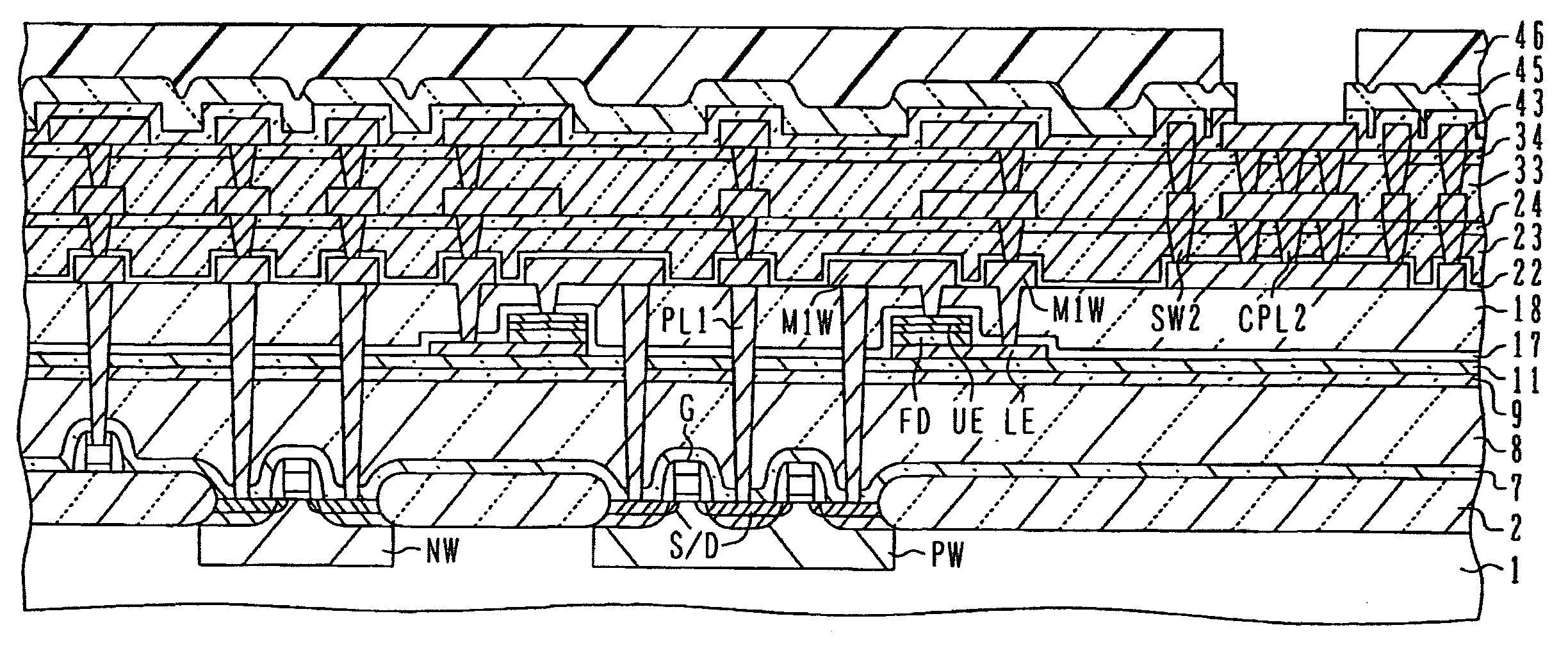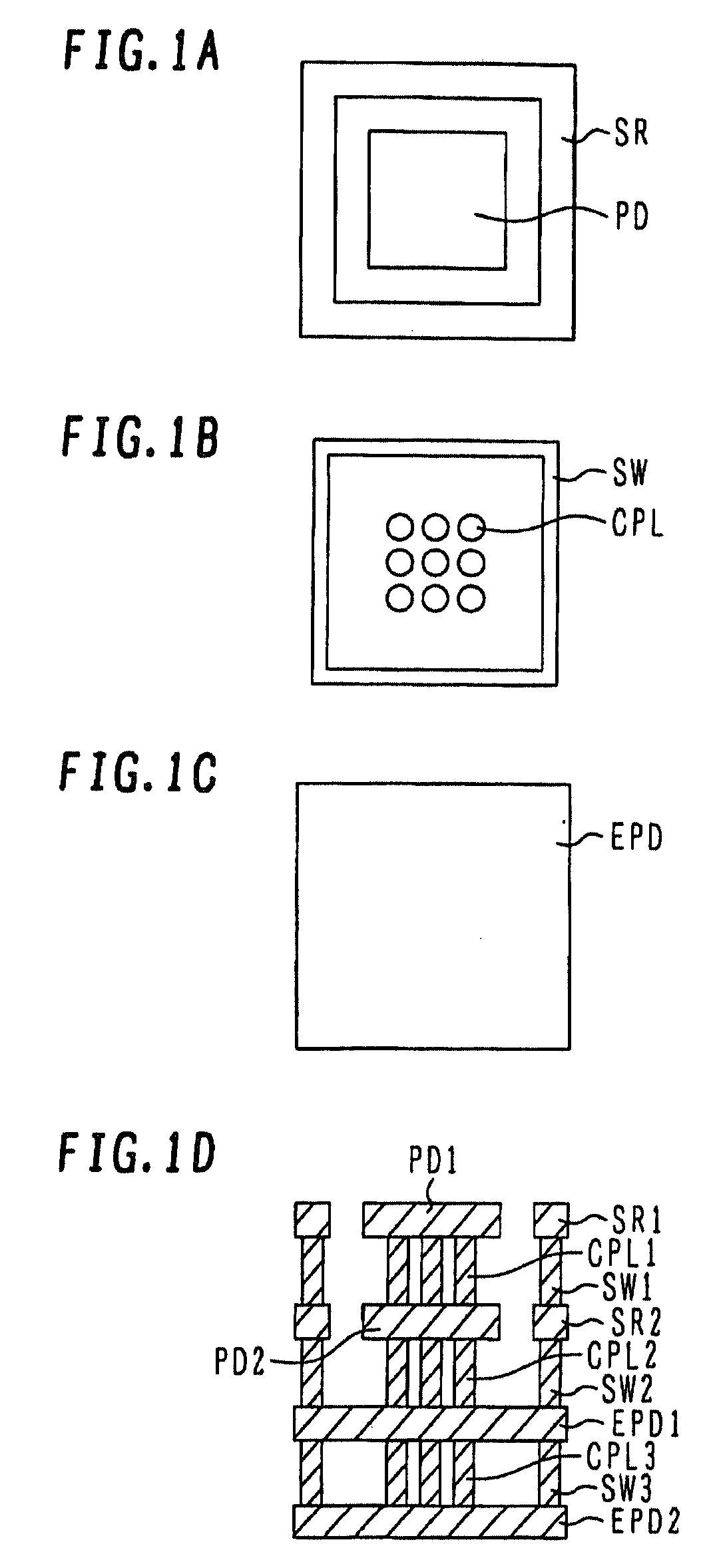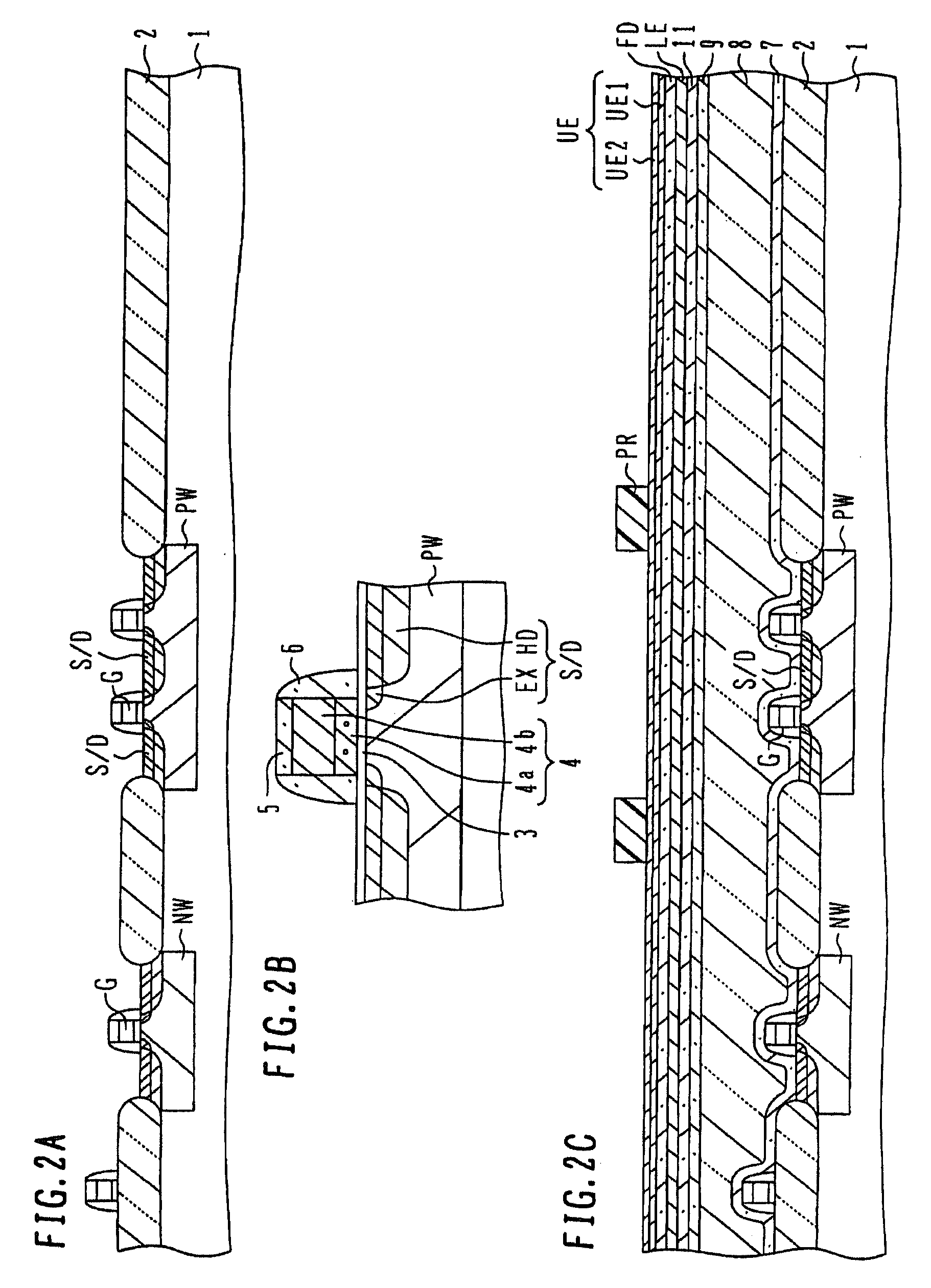Semiconductor device with improved pads
- Summary
- Abstract
- Description
- Claims
- Application Information
AI Technical Summary
Benefits of technology
Problems solved by technology
Method used
Image
Examples
first embodiment
[0041]FIGS. 2A to 2S are cross sectional views and supplemental plan views of a semiconductor substrate illustrating main processes of a semiconductor device manufacture method according to the
[0042]As shown in FIG. 2A, an isolation region 2 surrounding active regions necessary for circuit structures is formed in a semiconductor substrate 1, e.g., a silicon substrate, and an n-type well NW and a p-type well PW are formed in the active regions. In the structure shown, although the isolation region 2 is formed by local oxidation of silicon (LOCOS), it may be formed by shallow trench isolation (STI). A gate electrode G is formed above the active region, and source / drain regions S / D are formed in the active region on both sides of the gate electrode.
[0043]FIG. 2B is an enlarged cross sectional view of a transistor portion. A gate insulating film 3 of silicon oxide or the like is formed on the surface of the active region, and a gate electrode 4 made of a lamination of a polysilicon laye...
fourth embodiment
[0077]FIGS. 5A to 5D are schematic cross sectional views of a semiconductor device manufacture method according to the
[0078]As shown in FIG. 5A, processes similar to those of the first embodiment shown in FIGS. 2A to 2K are executed. After the ferroelectric capacitor is formed and covered with an alumina film 17, a silicon oxide film 18 and W plugs are formed, and thereafter the first metal wirings are formed and covered with an aluminum film 22 of 20 nm thick.
[0079]As shown in FIG. 5B, for example, a TEOS silicon oxide film 23 is formed on the alumina film 22 to a thickness of 2600 nm by CVD, and its surface is planarized by CMP. After the surface of the silicon oxide film 23 is nitridized, another TEOS silicon oxide film 24 is formed to a thickness of about 100 nm by CVD.
[0080]After the surface of the silicon oxide film 24 is nitridized, an alumina film 25 is formed to a thickness of about 250 nm by PVD such as sputtering. If necessary, thermal annealing is performed in an oxidizi...
fifth embodiment
[0083]FIGS. 6A to 6F show schematically the structure of a semiconductor device according to the
[0084]As shown in FIG. 6A, similar to the structure of the fourth embodiment shown in FIG. 4E, a sealing wall SW and a moisture resistant ring AHR1 are formed in the via conductor layer under the first metal wiring patterns M1W, and an alumina film 14 is inserted at the position crossing the via conductors and covered with a silicon oxide film 15. Similar to the structure of the fourth embodiment shown in FIG. 5D, alumina films 25 and 35 are inserted in the interlevel insulating film above the first metal wiring patterns M1W.
[0085]Further, also in the area inner than the bonding pad, an inner chip moisture resistant ring AHR2 having the structure similar to that of the chip moisture resistant ring AHR1 is formed. The inner chip moisture resistant ring AHR2 is cut off in an area where a bonding pad lead wiring exists.
[0086]FIG. 6B is a schematic plan view of the bonding pad structure of th...
PUM
 Login to View More
Login to View More Abstract
Description
Claims
Application Information
 Login to View More
Login to View More - R&D
- Intellectual Property
- Life Sciences
- Materials
- Tech Scout
- Unparalleled Data Quality
- Higher Quality Content
- 60% Fewer Hallucinations
Browse by: Latest US Patents, China's latest patents, Technical Efficacy Thesaurus, Application Domain, Technology Topic, Popular Technical Reports.
© 2025 PatSnap. All rights reserved.Legal|Privacy policy|Modern Slavery Act Transparency Statement|Sitemap|About US| Contact US: help@patsnap.com



